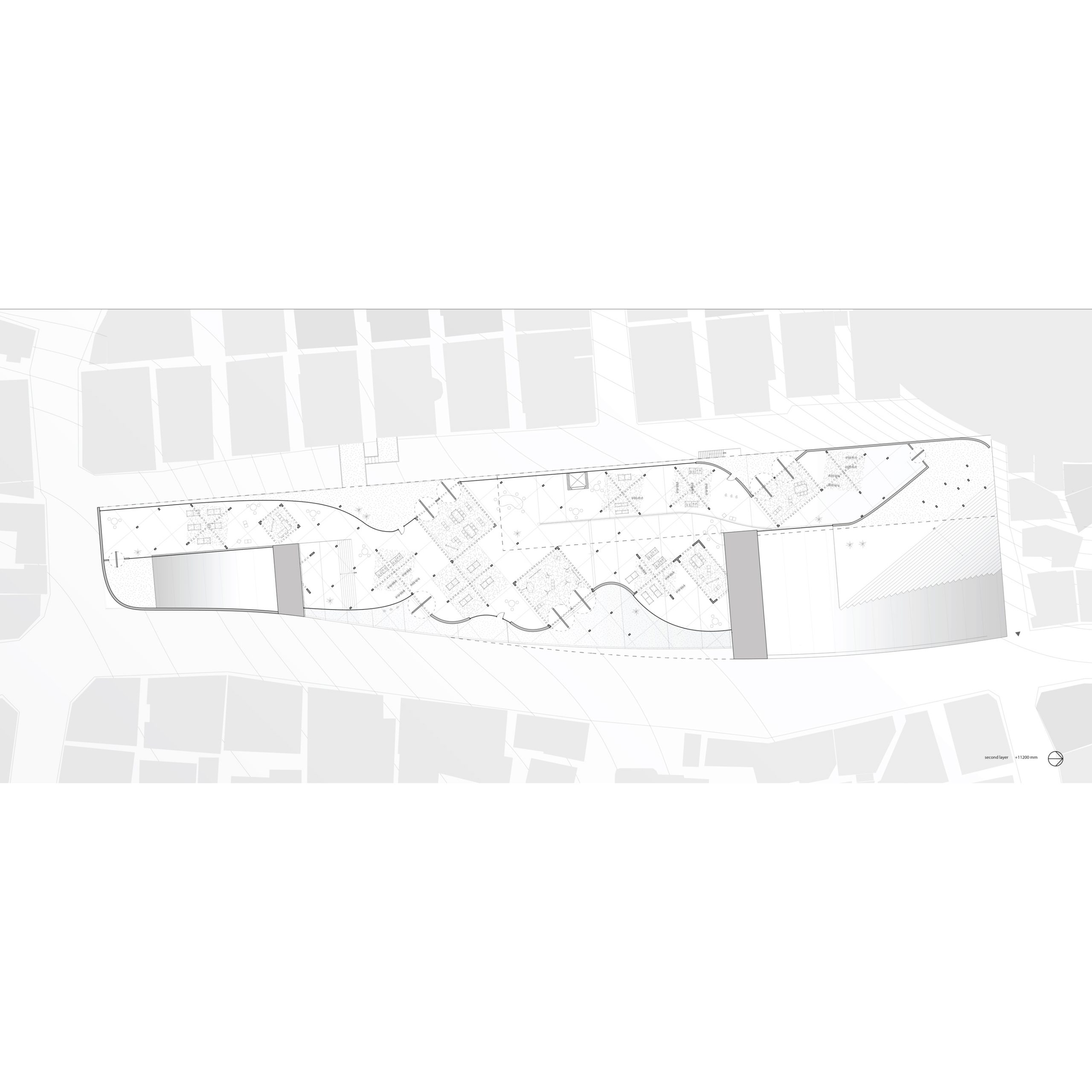이주연
Jooyoun Lee
동대문 의류산업 봉제장인들의 일터이자 주거지인 창신동은 대량생산과 패스트 패션의 영향으로 낙후되고 있다. 남아있는 봉제산업을 다시 활성화 시키기 위해 생산작업만 하던 창신동에 디자인과 마케팅을 하도록 하여 동대문과 독립된 업사이클링 패션 아이덴티티를 만들어주고자 한다. 현재 봉제공장은 방문자와 단절된 형태로 남아있다. 업사이클링 센터의 디자이너, 방문자, 주민과의 협업을 위해서 봉제공장의 경계는 풀어져야한다. 우리 주변에는 모호한 것들이 더욱 더 많아지고 있다. 두 개 사이의 경계가 뚜렷하지 않은 모호한 경계는 흑과 백이 아닌 무한한 가능성과 창의성을 제공한다. 창신동의 업사이클링 센터도 뚜렷한 벽이란 경계로 서로의 공간을 침범하는 느낌을 주는 공간이 아닌 서로가 자유롭고 자연스럽게 들어가서 협업을 하는 모호한 공간이 필요하다. 이 프로젝트에서 벽, 유리 등 다양한 건축 경계의 요소들을 사용하지 않고 아치와 기둥의 조합으로 벽이 없는 하나의 큰 공간을 설계했다.
Changsin-dong, once famous for their sewing industry, is facing a crisis due to fast fashion and mass production overseas. As Changsin-dong only takes part in the production system, this project aims to provide designing and marketing programs so Changsin has a new identity as an upcycling fashion identity. With their doors and windows closed, the sewing factories are currently disconnected with the visitors. For this upcycling center to allow new designers and visitors to work with the sewing factory workers, boundaries of the sewing factories should be ambiguous. There should be ambiguous spaces and programs that need factory workers. When the boundaries of two things are ambiguous, unlimited possibilities and creativeness are given. Changsin's upcycling center should not have boundaries that block certain types of people or make people feel like their place is being invaded, but should have ambiguous spaces that allow collaboration. Rather than using entrances, doors, and walls that make clear boundaries in architecture, different combinations of arches and pillars are used in one big space to create ambiguous boundaries.











